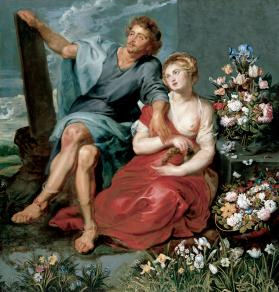Sir Edward Turner 1st Baronet 1691-1735

Sir Edward Turner, 1st Bt. Of Ambrosden 1691-1735 Sir Edward Turner, 1st Bt,1691-1735 Edward Turner, was born in 1691, the second son of John and Elizabeth Turner of Sunbury London. He grew up during a period of considerable expansion of British trade and a time when huge profits were to be made from the British East India Company Burke notes that he was a member of Lincoln’s Inn, one of the four professional societies for barristers, though in his time a gentleman’s education often incorporated a period studying the rudiments of law at one of the Inns without pursuing it as a career. Mary Turner nee Page c.1697 – 1744 In 1718 he married Mary, the eldest daughter of Sir Gregory Page, 1‘ Bt. Of East Greenwich, and it was probably his father-in-law’s influence as well as that of his brother, John...

